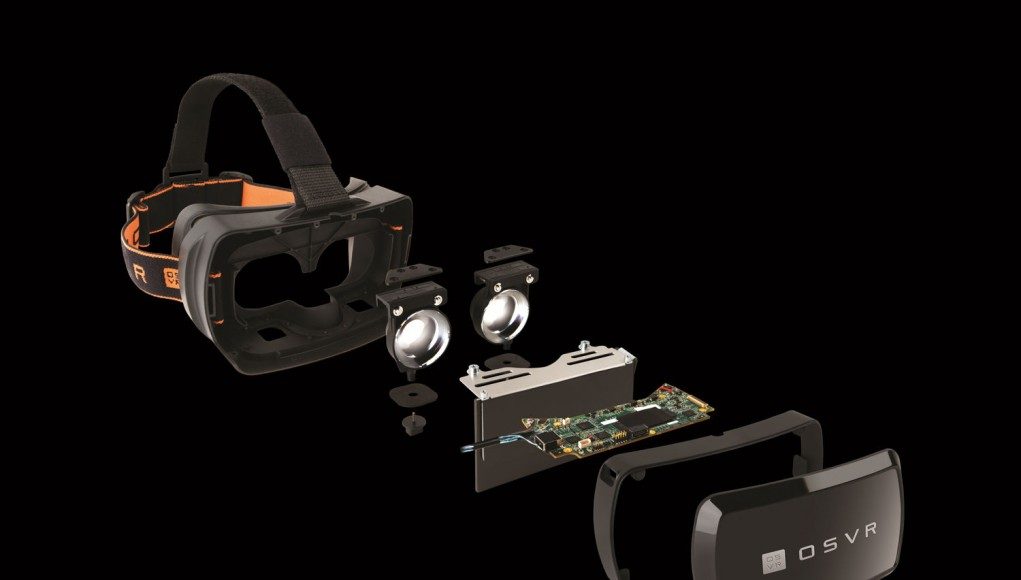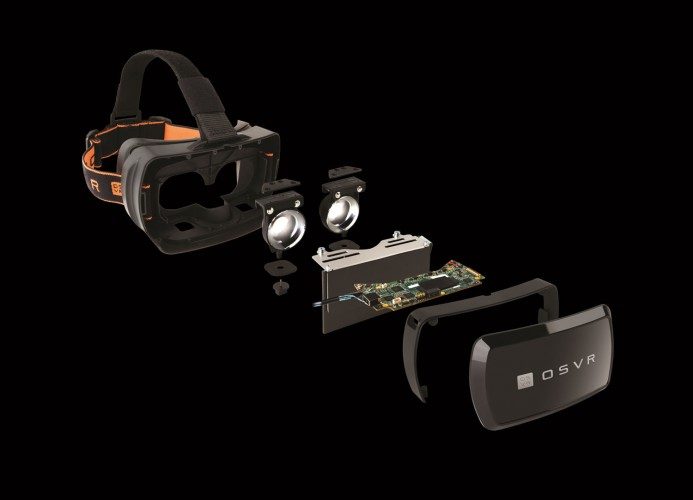Open Source Virtual Reality’s (OSVR) flagship VR headset is to get some upgrades. HDK v1.1 brings a low latency 1080p OLED panel and video mirroring amongst other enhancements, the movement has announced today.
We reported on the new Open Source Virtual Reality initiative, lead by peripheral manufacturer Razer and VR headset veteran Sensics, during CES 2015 in January. It’s a movement formed to bring open source virtual reality to market. The theory being, by encouraging the sharing of technologies and promoting hardware ‘hackability’, the field of virtual reality becomes richer and develops more quickly as a result.

We got our hands on the initial HDK (Hacker Development Kit) model at CES. The unit sported removable optics, faceplate and swappable panel amongst many other hackable elements, but sported a somewhat dated looking LCD panel.
See Also: CES 2015: Hands-on With the HDK VR Headset From Razer & Sensics
OSVR has today announced that it’s launching the updated HDK v1.1 with components that bring the unit more closely in line with industry leading devices heading either heading or on their way to market. In particular, the new headset boasts a new 1080p OLED panel, providing high-contrast, low-latency imagery within minimal motion blur.
Other technical enhancements include the ability to mirror the HDK’s display to another monitor – something that’s currently tricky to achieve at times with the Oculus Rift DK2. Smartphone video connectivity is provided by standard Slimport – enabling HD video to be streamed to the headset directly. You can now also convert standard video to Side by Side format, for viewing through the HDK, on the fly and stream low-latency video signals too.
Finally, there will be downloadable schematics made available at the OSVR website, which when printed and furnished with the correct electronics, will provide mountable IR LEDs which can in turn be used for
Ergonomically the HDK has also evolved, now offering a more elegant facemask design with better support.
The HDK goes on sale in June for $199.99. We’ll of course keep you up to date on any further developments. Head over to the OSVR website to lean more. In the mean time, here are those HDK 1.1 updates in full.
Improvements: x 1080p OLED display with higher contrast and faster pixel‐switching for lower latency x Improved optical mechanics for easier adjustment to individual preferences x Ergonomic facemask design for optimal comfort x Support for standard 1080p video:
- Ability to use the HDK with a low‐latency wireless video link
- Ability to mirror the HDK video feed to external monitor
- Ability to connect smartphones to the HDK* via a SlimPort or MHL standard adapter
- Ability to convert standard video to side‐by‐side format in real‐time
New Faceplate Modules:
The following modules have been designed for technology evaluation and can be downloaded from the OSVR Website to be 3D‐Printed or modified for development needs.
- IR‐LED Faceplate Module – In conjunction with an infrared camera this module will enable positional tracking using pattern detection.
- Dual‐Camera Faceplate Module – With an integrated dual‐camera system, this module will enable positional tracking and augmented reality applications. To find out more and download the designs, go to www.osvr.com/hardware/








